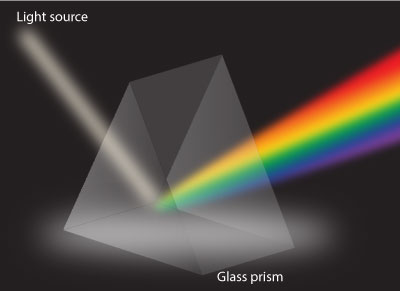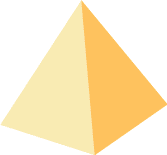
Year 6
Measurement and Geometry
Construction of prisms and pyramids
In mathematics, some of the words that we use come from Greek or Latin. This is especially true in geometry, where the name of a three-dimensional object can tell us something about the object. For example, an icosahedron has 20 faces that are all triangles – ekosi means '20' in Greek.
The word poly means 'many', and the word hedra means 'face'. A polyhedron is a three-dimensional object with flat faces and straight edges. The faces are polygons. They are joined at their edges. The plural of polyhedron is polyhedra, so we can have one polyhedron and two or more polyhedra.
We will look at two types of polyhedra: prisms and pyramids. We see these types of polyhedra in science and in architecture.

A triangular prism made of perspex or glass can split white light into the seven colours of the rainbow.
The Great Pyramid of Cheops in Egypt is a square pyramid. When it was built it had a height of 145.75 m and its base was a square of side length 229 m.

Construction material can be used to build prisms and pyramids, which will help students to describe the attributes of three-dimensional objects. Some construction material is based on pieces that will become the faces of three-dimensional objects. Other types of materials are based on the edges and join at the vertices. Students should become familiar with different types of construction and use the associated vocabulary.


